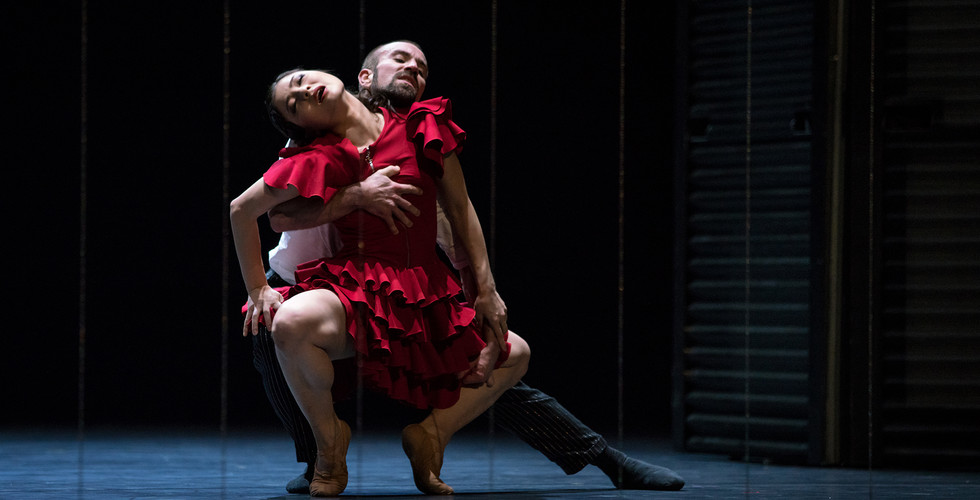Review: Carmen at the Festival Theatre
- Theatre Travels

- Mar 11, 2019
- 2 min read
By Lisa Lanzi
Carmen is based on the novella by Prosper Mérimée and uses music from Bizet’s famous opera and that of Rodion Schtschedrin from his Carmen Suite plus additional original music by Marc Álvarez. It is choreographed by Johan Inger and evolves from many other historic ballet interpretations by luminaries such as Roland Petit, Alberto Alonso and Carlos Acosta.
First and foremost, the dancing. As an audience we are privileged to have this remarkable company perform here, their technique and virtuosity stunning. From Principals to soloists and ensemble, all acquit themselves with gusto. Interestingly, the entire female cast does not work en pointe, but in flat dance shoes. I suspect this is meant to show a more earthy side to the women, a more ‘Spanish’ flavour. As much as the technique shines, the still balletic ‘weightlessness’ leaves me a little cold and the portrayed sensuality seems lacking - a kind of ‘pasted on’ pretence at sexuality and desire. I understand that flirting and seduction is a large part of this story - from both sexes - and there were inventive choreographic elements that hinted at this. One odd device left me with the image of ‘twerking’, the rear frills on the women’s’ dresses bouncing and flapping… invitingly(?). I found this disconcerting and in light of so much backlash against feminism of late I wonder if the female characterization could have been less victim-like and more empowered. Carmen is meant to be an independent, fiery woman confident in her sexuality and power of allure, someone from a lower class who is comfortable using her beauty and sensuality to attract powerful men. For me, this representation did not read as such though I am sure that was the intention.
Swedish dancer turned choreographer Inger is a prize-winning independent whose lineage is impressive, starting from his ‘choreographic breakthrough’ in 1995. After his own notable career as a dancer, his works now live on in numerous ballet companies across the globe.
With Carmen, Inger decided to start from the point of view of the inherent violence in the story. There is also the traditional hierarchy of status: the cigarette factory women, guards, leaders and the mythical toreador all posturing but ultimately stuck in their societal positions. The depiction of violence is highly stylized yet reasonably effective. Various movement motifs emerge and serve to identify each of the characters and the way they interact within the narrative. Another image, not found in other interpretations, is the ‘innocent’ - an adolescent male (played by a female) who observes and is affected by the unfolding tale and the escalating violence. Will his spirit remain untarnished or will he be so influenced by what he witnesses that his life will ultimately fall into a patriarchal pattern and continue the less desirable status quo.
The imposing set and lighting were creative and the dark power of an ensemble of masked figures who controlled the destiny of all was a powerful addition. I believe this ballet should be seen and is definitely a crowd-pleaser.
Photo Credit: Ian Whalen
All opinions and thoughts expressed within reviews on Theatre Travels are those of the writer and not of the company at large.
























